My survey of Tuscan-style architecture and interiors, beginning with Under the Tuscan Sun, continues into the hills above southern Florence. The 15th-century Villa delle Rose, an example of the classical Tuscan villa modeled after Villa Medici in Fiesole, was saved from obscurity by Ernest Boissevain and his wife Jean Tennyson, the famous opera singer, when they discovered it in near ruins in the 1950’s. Originally a fortified farm, Nicolo Antinori – a Tuscan nobleman – purchased the property around 1487 to further expand his wine dynasty, making stylistic changes and improvements over successive generations to the dwellings. It stood abandoned for many years following encampment by both Nazi and American forces during WWII.
Today Villa delle Rose – now referred to as Villa la Rose, originally named for the property’s luxuriant roses – is owned by Maria Beatrice and Leonardo Ferragamo of the fashion and luxury leather goods empire and is available for private rental.
The entry of Villa la Rose celebrates country house-style with walnut front doors original to the house and a reproduction of one of the villa’s 15th-century refectory tables.
Another view of the entry hall features a hunt scene painting. Unfortunately, wide-angle lenses don’t capture the spirit of their subjects, and in this case are better suited for real-estate websites; but it’s certainly interesting to see more of this exceptional villa.
The grand salon at the time of the Boissevians was simply furnished with silk damask upholstered furniture and wall-to-wall beige carpeting – typical of its era – as a foil to the theatrical late-18th-century frescoes which mix trompe l’oeil architectural elements and panoramas.
Further restoration and decoration of Ville la Rose by the Ferragamos became a family affair: Maria Beatrice’s sisters, Elena Garagnani and Francesca Garagnani Poccianti, and Francesca’s husband Carlo Ludovico Poccianti – partners in the architectural and interior design firm Archflorence – approached the project with reverence for the many decorative frescoes throughout the villa. Elena, an artist, brought back to life the Piranesian ruins depicted against a clear cerulean sky in the grand salon, above.
The designers’ modus operandi throughout the villa was to allow the frescoes to take center stage, with simple yet luxuriant furnishings in complimentary colors supporting them. Here, a modern travertine cocktail table and the clean lines of contemporary furniture upholstered in blue silk velvet strike a contemporary note.
The frescoes in the small dining room at the time of the Boissevians are an airy, intricate blend of Herculaneum-inspired figural and decorative motifs.
The same room is now furnished as a sitting room for the Ferragamos with neo-classical furniture complimenting the delicate tracery of the stylized grotesques.
A mythical mural enveloping the large dining room with a trompe l’oeil dado is complimented by a predominantly green richly patterned Aubusson, contrasting red velvet upholstered Italian Louis XIV chairs, a 16th-century table, and a delicate Venetian chandelier during the Boissevains stewardship.
The same dining room is now furnished with a mahogany-and-walnut table and chairs. Instead of pulling from the reds and greens of the frescoes the Ferragamos have played up the blues and yellows. The gilt-wood console adds a note of Baroque grandeur against the Fragonard-esque 18th-century frescoes.
Simple country-house style inform the kitchen with its original Tuscan fireplace. Rustic Spanish armchairs surround a farm table.
A view from the loggia into an inner courtyard towards a facing wing framed in luxuriant foliage.
The library features to scale models of sailing vessels, one of Leonardo Ferragamo’s passions and pastime as president of a manufacturer of yachts.
The ballroom/reception room photographed at the time of the Boissevians, where Italian Baroque carved sculptures intermingle with trompe l’oeil statuary.
The Pocciantis designed a silk Pagoda canopy to compliment a bedroom’s Chinoiserie theme.
Elena Garagnani restored the Eastern-style frescoes in the Chinoiserie-themed bedroom. An 18th-century bench is covered in antique gold silk, and the two armchairs were handmade in Florence.
The State Bedroom at the time of the Boissevains featured an ornate appliqued bedcover, canopy and illusionist headboard to compliment the framed panels of the decorative wall frescoes.
Today a carved 17th-century gilt-wood-and-damask valance was fashioned by the Pocciantis to frame one of the frescoes in the former State Bedroom, recognizable by the fretwork border near the cornice.
A vanity was designed to complement the neo-Pompeian arabesques in a guest bath.
Black Portoro marble covers the floors and bathtub of a bathroom with walls covered in neo-Pompeian frescoes.
THE VILLA AND GARDENS
Next stop, Tuscany, will be the 17th-century classically-inpired Villa Cetinale presided over by Lord Edward Richard Lambton, the seventh Earl of Durham.
This post was based on an article written by Mitchell Owens for Elle Decor, April, 2005, with photography by Pieter Estersohn, and on text adapted by Cameron Curtis McKinley for In the Tuscan Style written for Architectural Digest: Chateaux and Villas, 1982, with photography by Robert Emmett Bright. All other photos via the Villa la Rose website – available for short and long-term rental.











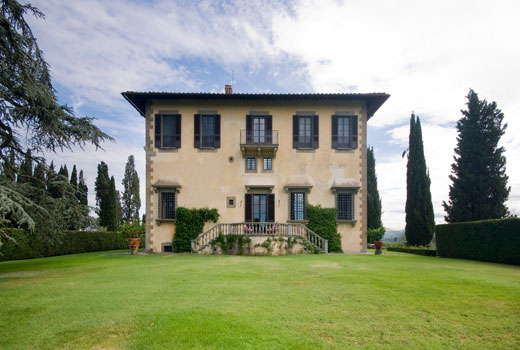
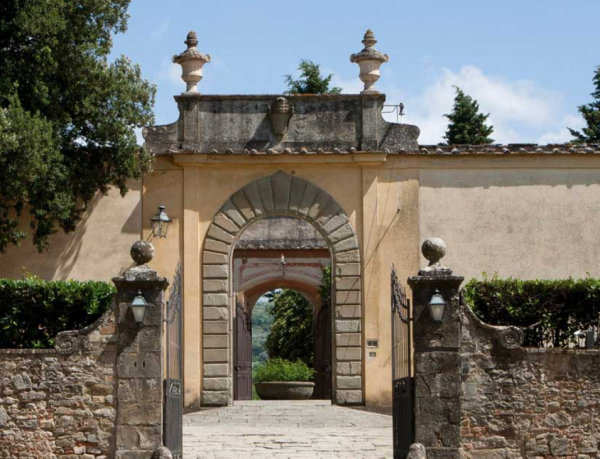
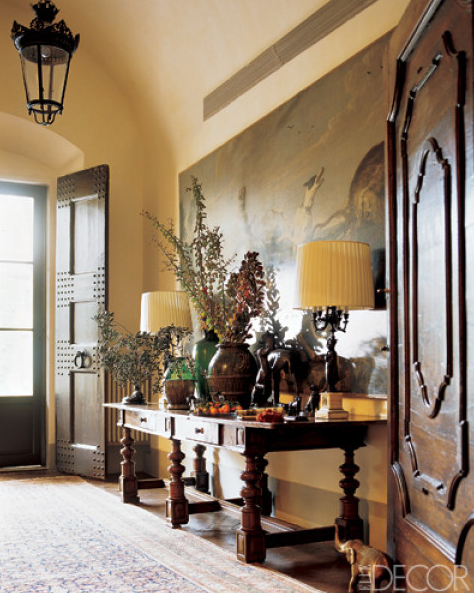
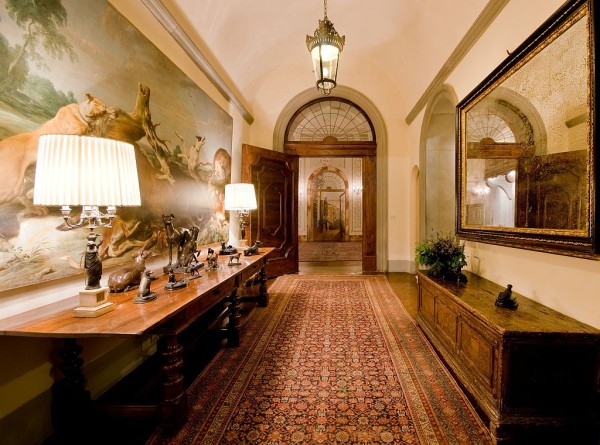
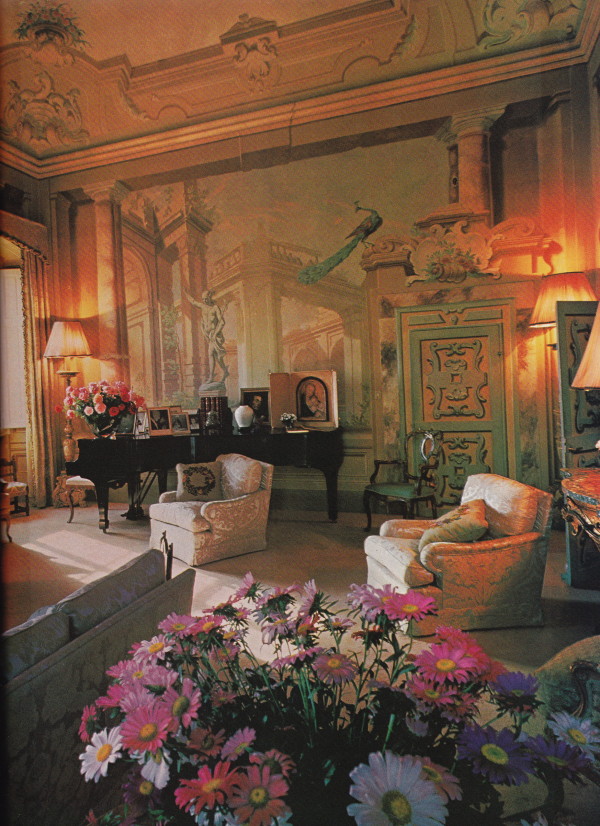
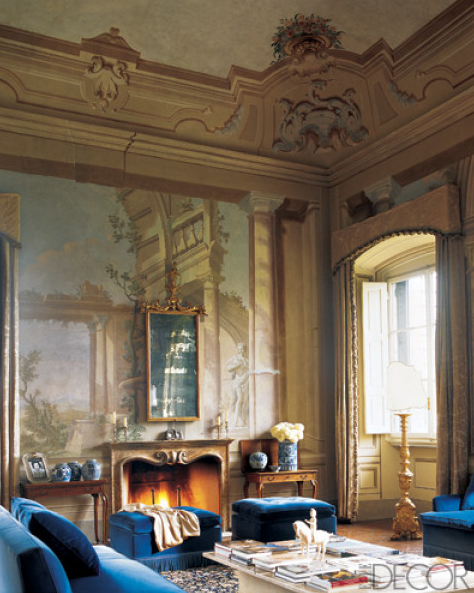
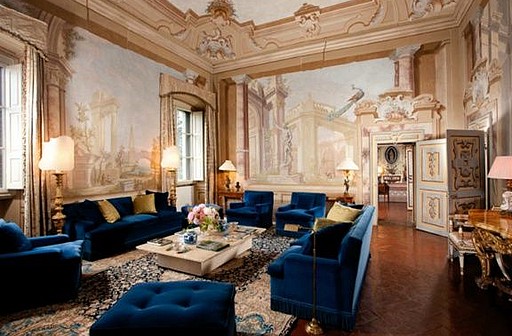
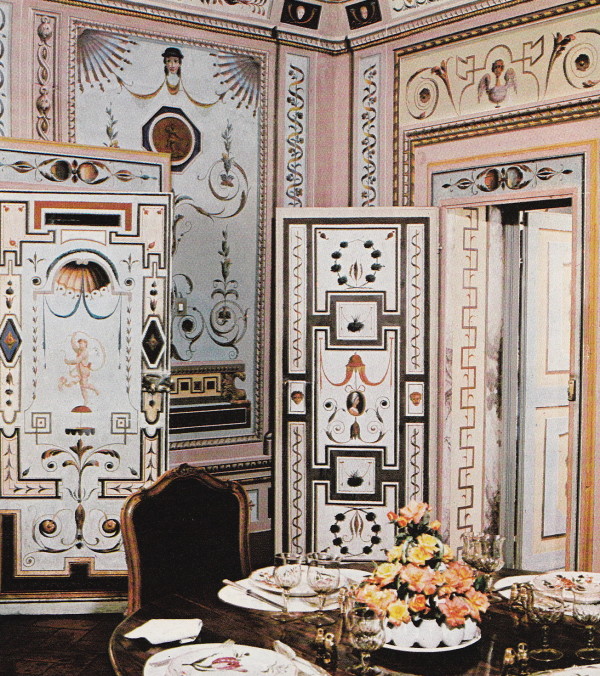
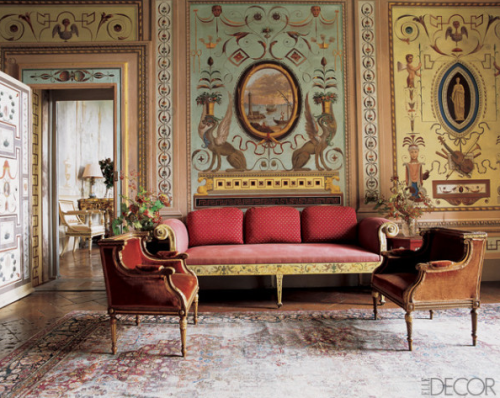
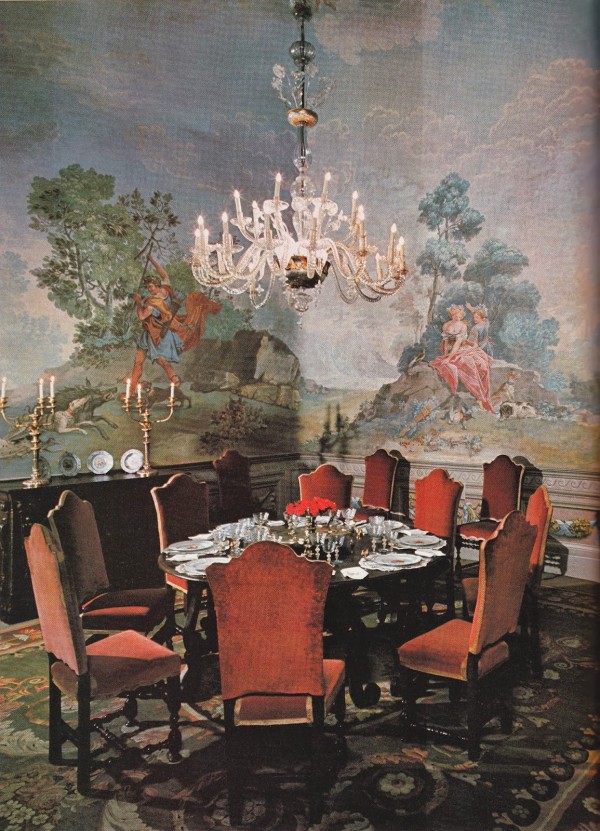
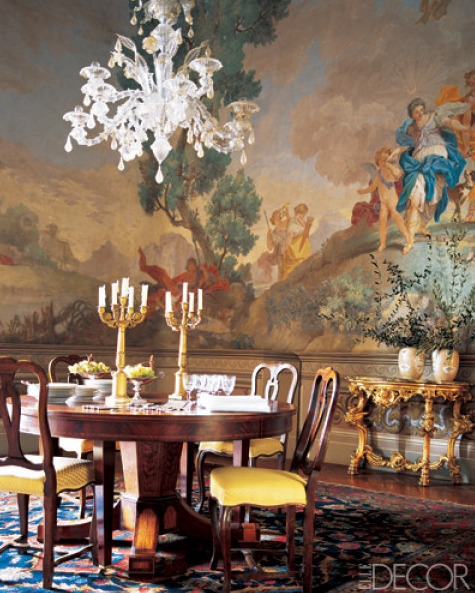
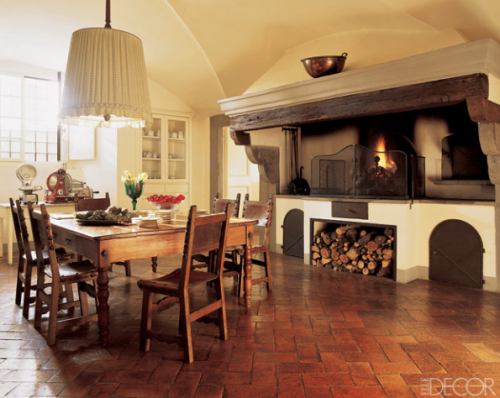
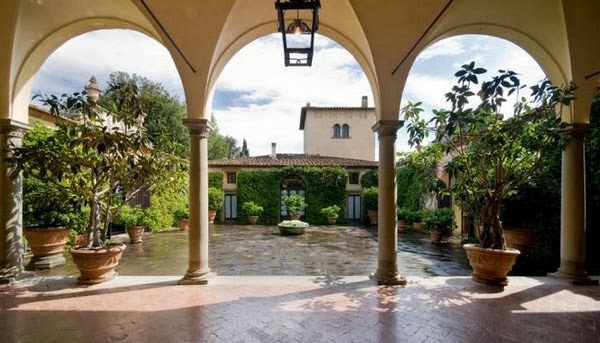
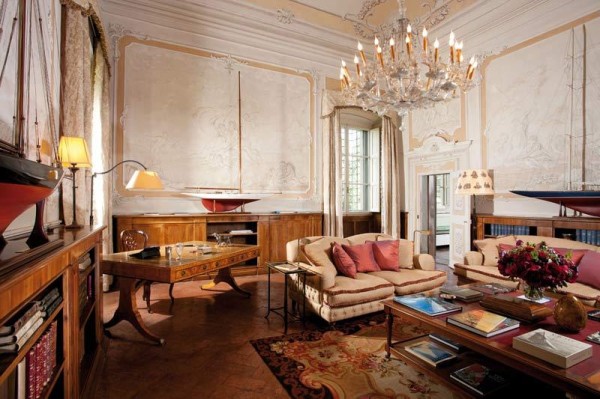
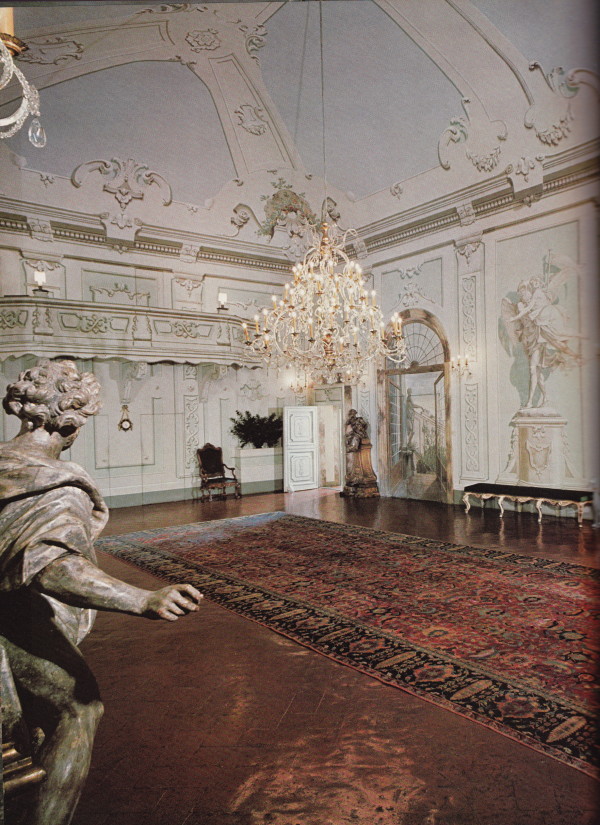
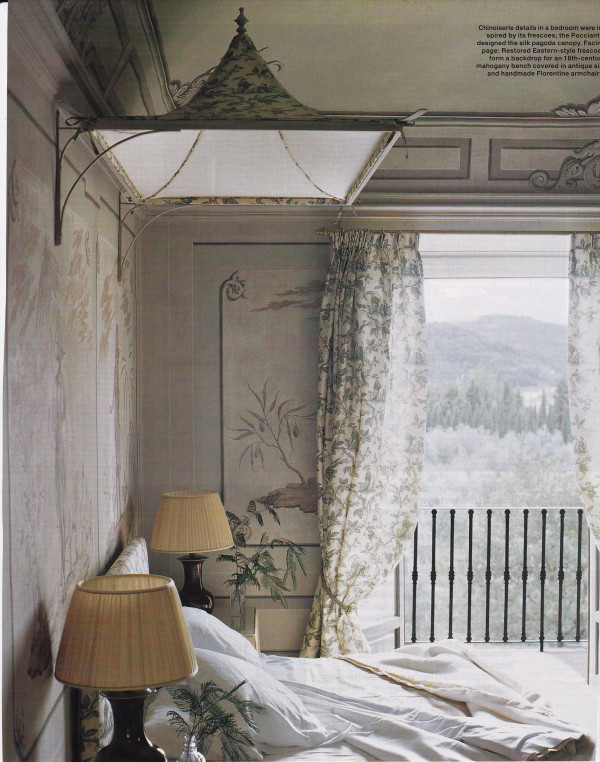
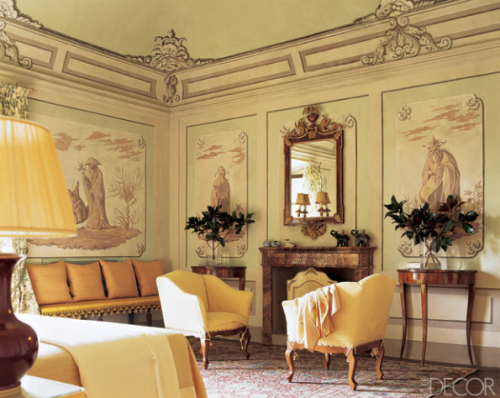
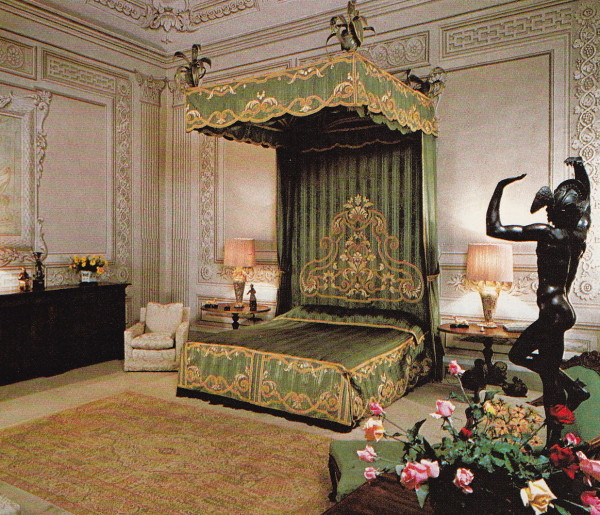
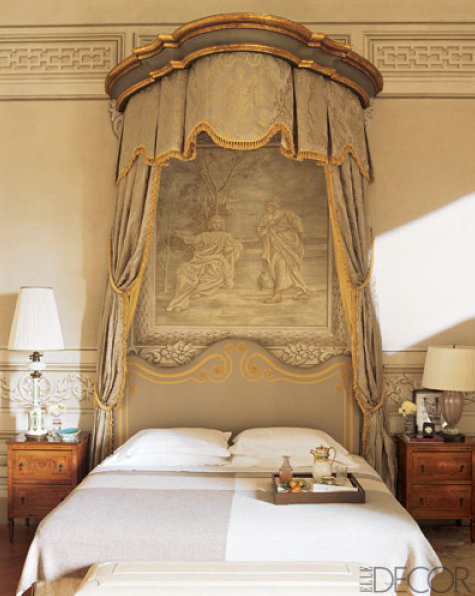
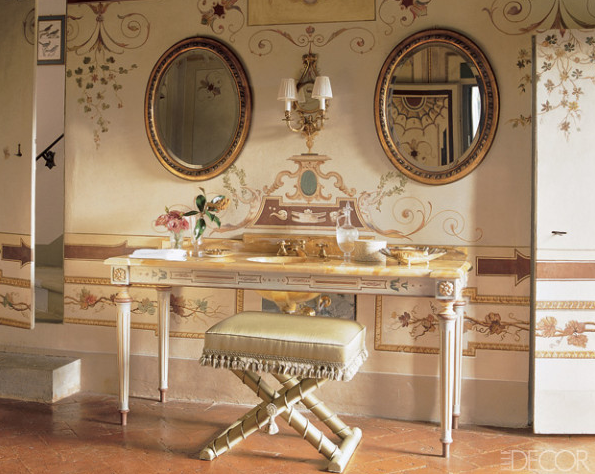
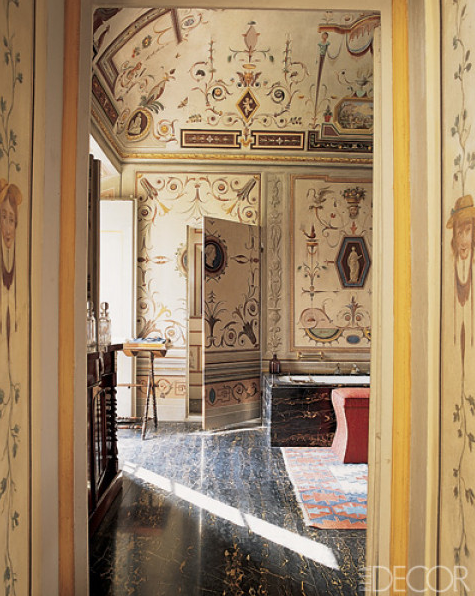
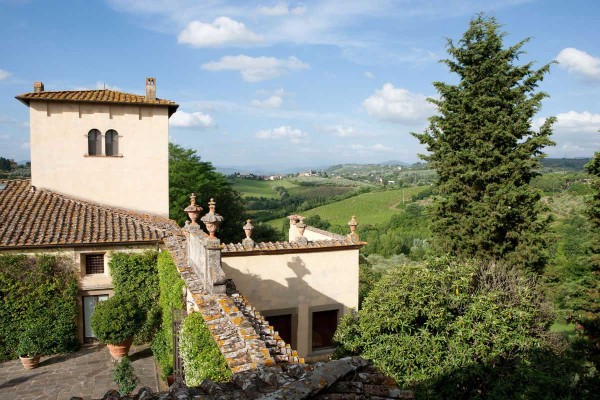
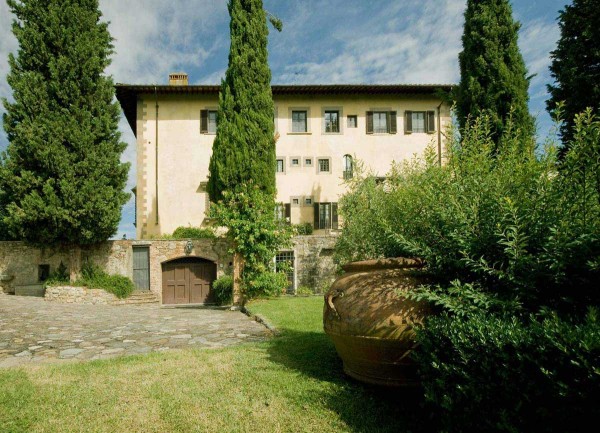
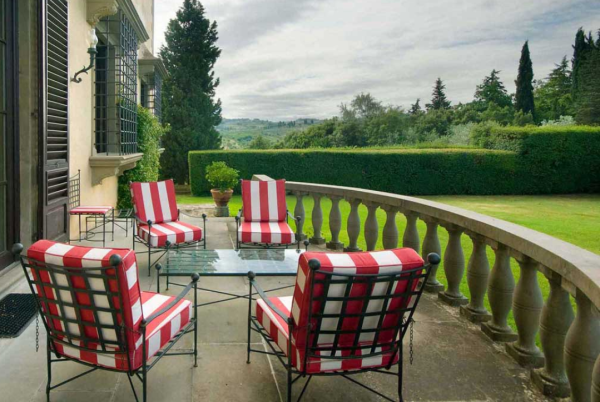
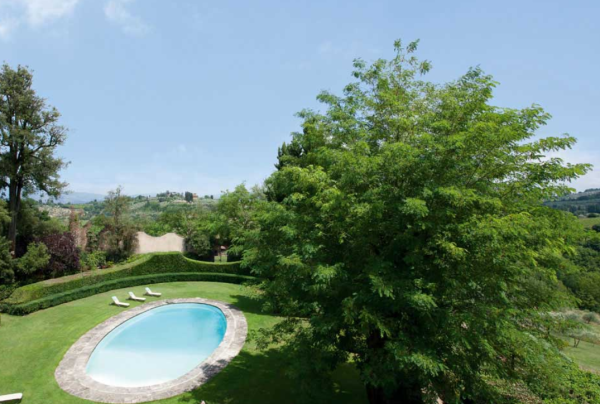
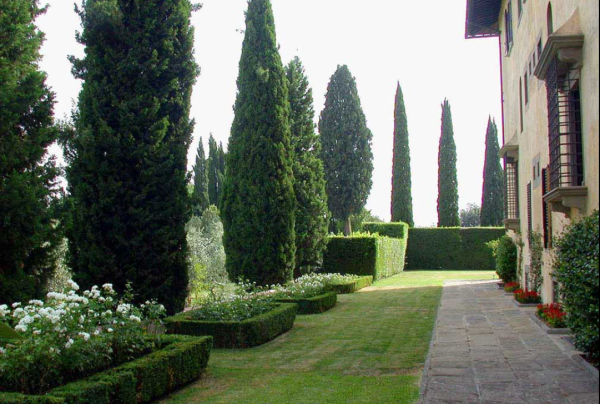
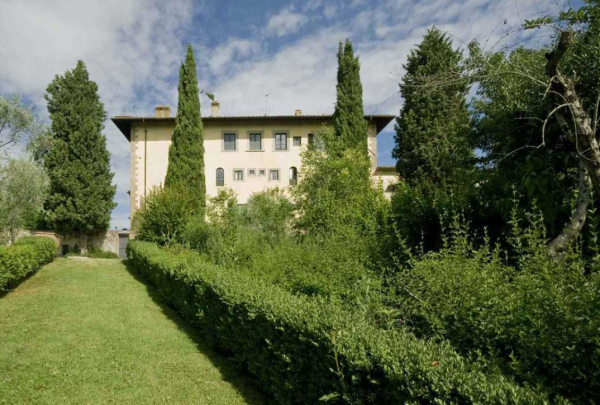



In the c. 1983 reincarnation of the US House & Garden magazine, there was an article on the house called Daylesford in Gloucestershire, then in the possession of H Thyssen Bornemisza. The house had been decorated by Mongiardino to surround that amazing collection of paintings. I, at one point had the magazine but can no longer find it. I would be to see it once again
Thomas – I am familiar with Daylesford and its decoration under Mongiardino, and I also happen to have the House & Garden issue you are referring to. Look for coverage of the Thyssen-Bornemisza collection and house in a future post in January. Thank you for your comment!